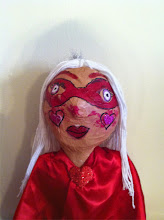2. On pg 31 Bourriaud states, “The proliferation of long viewing sessions at biennial exhibitions and the increasing artistic legitacy of the documentary genre indicates above all that this type of object is no longer commercially viable outside the art circuit.” If art is life and vice versa, why is HIGH art still the model of the only art with value?
3. The IVY Analogy and the Radicant
The radicant can without injury, cut itself off from its first roots a reacclimate itself.
“Contemporary art provides new models with this individual who is constantly putting down new roots for it constitutes a lab of identities”
If we are relabeling what the artist and their role we need to reevaluate what value means. Bourriaud says that, “our ways of seeing and acting have been transformed in a similarly brutal way by economical globalization” (pg.17) If this is so than why is the art world following the model of bourgeois art fairs and high priced galleries. Anything in a gallery must be expense vs. what it actually is and worth to the viewer.
No single origin but have successive simultaneous, or alternating
4. The radicant is the artist struggling between environment he/she is in and the forces of uprooting (globalization). Are we as artists supposed to fell okay with this or have a dizzying effect with the harshness of a new global market? Is the ‘stateless’ state of an artist a reflection of the migratory influences of generations past? Because we are so interconnected I feel we are only taking the best part from generations past and mixing them with modern culture. Are we really losing anything by blending or gaining the ability to be aware of bits and pieces of every corner of the world?
5. What positive & negative effects are we creating if ‘progress’ is the new art form to follow? What is progress, and who is benefiting from this model? Was the ‘old’ way of doing things so bad?
6. What is Gauguin role from a globalization perspective on the art world? Was his Polynesian experience the beginning on the end of national identification? Is it a continuation of Western society imposing its influences on indigenous cultures but through an artist hands? Who is he to judge as savage? If Victor Segalen was so passionately a supporter of the indigenous culture why didn’t he use his Western influence to preserve it? Is what is exotic to the viewer the only thing of value, a new set of sensory overload to contemplate and ponder?
Artists List
Darren Almond
Interested in the notions of geographical limits and the means of getting there – in particular, culturally specific points of arrival and departure
Jean Hubert Martins/ Curator & Museum Director
Barthelemy Toguo-Cameroon Artist (Sculpture, Video, Installation, 2-D)
Project-Take your Place, 2007, 208 x 130 cm
Craig Owens allegorical impulse
Mike Kelly-Installation Artist & Musician
ranges from highly symbolic and ritualistic performance pieces, to arrangements of stuffed-animal sculptures

"Extracurricular Activity Projective Reconstruction #s 2 through 32 (Day is Done)"
2004-2005
"All the scenarios for 'Day is Done' are based on images found in high-school yearbooks in this particular case, though I’ve also done a whole collection of similar kinds of images from the small-town newspaper of the town where I grew up. The particular categories had religious ritual overtones, but outside of the church context. They all looked like they were done in public places, or they had gothic overtones. So I said, 'Okay, I’m going to work with these particular groups of images and develop a kind of pseudo-narrative flow.' The rituals run the gamut from something like dress-up day at work to St. Patrick’s Day or Halloween, to a community play or an awards ceremony."
- Mike Kelley
Nathan Coley
Nathan Coley Camouflage Mosque (Gold) 2006, Courtesy doggerfisher and Haunch of Venison
Lawrence Weiner
Bits & Pieces Put Together to Present a Semblance of a Whole, The Walker Art Center, Minneapolis, 2005
Carsten Holler
Please click on this Carsten Holler at the Tate Modern to watch video








No comments:
Post a Comment